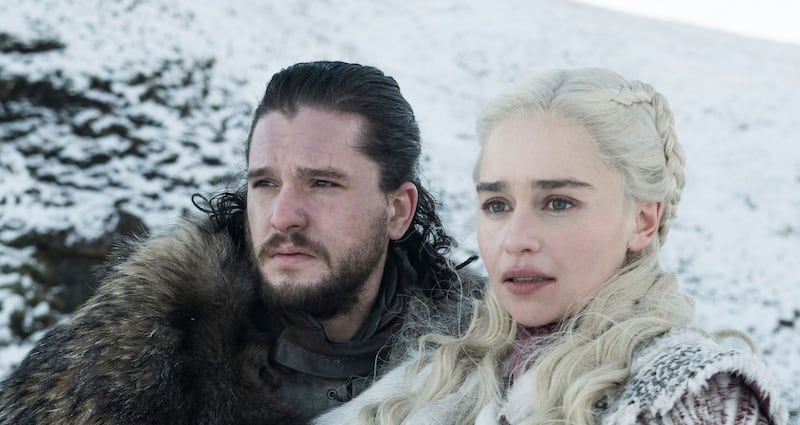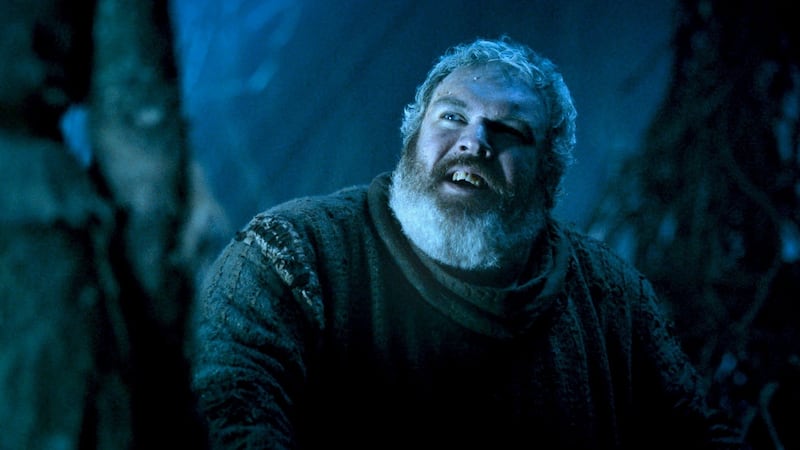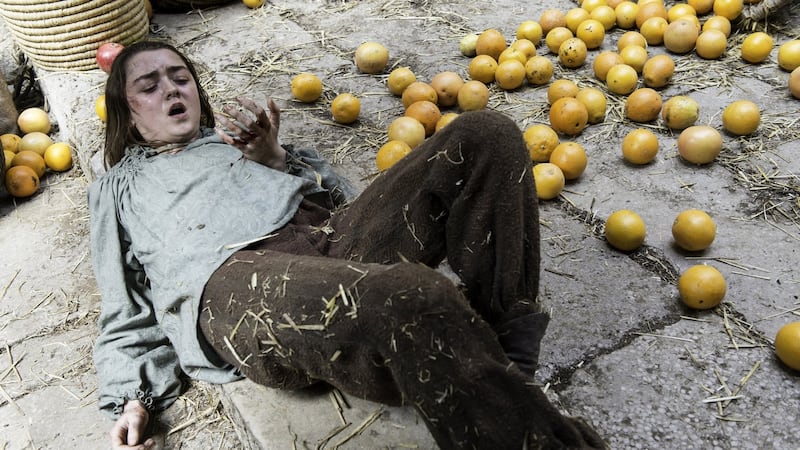It is beautiful beneath the sea, but if you binge too long, you'll drown. Welcome back to your guide through an epic Game of Thrones rewatch ahead of season eight, which starts on April 14th.
Catch up with recaps of past seasons with our ultimate watching guide, which also includes suggested episodes to rewatch for each season to bring you up to speed. Or you can tap into our weirwood tree and warg into our gentle giant – simultaneously! – for a vision quest of season six.
Novices beware: This article is dark and full of spoilers. And now your watch continues.

How should I rewatch Game of Thrones season six?

Concentrate on the instalments that are central to the famously complicated plot and provide all the feels. Here are four must-watch episodes.
Episode 2, Home: Watch to visit Winterfell in happier days, when Hodor could speak. Take a deep breath and exhale with Jon when he comes back (as he always does). Also, it's kin-slaying time in Winterfell and the Iron Islands.
Episode 5, The Door: Bran's vision quests into the past take their toll, and Hodor pays the price. (Or did he pay it long ago? Time travel is so confusing!) Bonus: Welcome a new villain, Euron Greyjoy, who promises more to be more fun than Ramsay.
Episode 9, Battle of the Bastards: It's time to take back Winterfell (and yell at Rickon to zigzag). Smile along with Sansa when Ramsay provides one last meal for his beloved dogs.
Episode 10, The Winds of Winter: Cersei has a blast wiping out her enemies and claiming the throne in a sequence with unforgettable sounds and visions. Also, R+L=J confirmed. Have a little Frey pie?
Four things to watch for in Season 6

After a series of disturbing setbacks, several traumatised characters fight to take back the places they once called home and bring some stability to the social order. Trying to pick apart the complex narrative? Thinking along these themes might help.
White Walking and Greenseeing
What are the White Walkers up to? How much does the Three-Eyed Raven know about it?
It’s clear that there is much being left unsaid, especially on the part of the extremely uncommunicative Night King. First, the White Walkers are marching along a very strange, meandering route with their army of the dead. Why don’t they head straight for the Wall? Did they need winter to come to slow the wights’ decomposition? Are they giving the baby White Walkers time to learn to walk on their own? Or are they waiting for some sort of magical assist, maybe someone they can mark who will pass through the Wall first?
Benjen tells Bran and Meera that the dead cannot pass the Wall – ancient spells are carved into its foundation for protection, like the magical wards in the Three-Eyed Raven’s cave, which were broken once the Night King marked Bran. If there were a possibility the wards could be broken, shouldn’t the Raven or the Children of the Forest have warned their guests? Why don’t they? The Raven practically forces Bran to go into download mode when they should be escaping. Maybe he knows the Night King wants to kill him. Or maybe the Raven wants to die while connected to Bran and the weirwood-net, so that everything he knows becomes part of the trees and accessible to Bran.
Was this the Raven’s plan all along? Benjen, who says the Raven sent him to help Bran, is not surprised the Raven is dead and automatically expects Bran to assume that mantle. It feels like there is a certain inevitability to all of this, even though so much remains unknown, including whether Bran’s mark has any effect on the Wall’s protective magic.
The Line of Succession, The Proper Progression, The Lawful Ascension
Even in a world like Westeros, there are rules of succession. But they are rules that are easily subverted, especially by those willing to murder their way to the top. Ramsay makes sure not to murder Roose Bolton until after he is legitimised and recognised as his father's heir. And the High Sparrow – who surely believes that Tommen is a bastard born of incest, but depends on his supposed legitimacy – tries to cement his position by ensuring the king and queen get busy making an heir, just in case Tommen isn't long for this world.
Even Euron Greyjoy, who murders his brother to force regime change in the Iron Islands, abides by the traditions of his people and participates in the Kingsmoot, the closest thing to democracy in the Seven Kingdoms outside of the Night’s Watch elections. They’re recognising the legalities of their positions.
But the women seizing power are rewriting the rules. Ellaria Sand and the Sand Snakes violently overthrow Dorne and take control, even though Ellaria wasn’t next in line. And there is – or was – no legal basis for the Queen Mother to take the throne after the death of the king’s last supposed heir. Then again, Cersei had already thumbed her nose at the line of succession by placing her kids born of twincest on the Iron Throne, where she could rule through them (or try to). And she’s willing to blow up anyone who challenges her. She kills not only the Faith Militant, the Tyrells and members of the Small Council, but hundreds of nobles present to attend the trial. Qyburn, in effect, becomes the second most powerful member of the court, replacing the Hand, the Small Council and the High Septon. Who’s left to ask the Citadel to check the royal family trees? Luckily, Bran’s got much of the archive in his head.
Near-Death Experiences
The Many-Faced God does not like having lives stolen from him, but a lot of characters defy death anyway. The Three-Eyed Raven claims to have lived for a thousand years. Melisandre, it's revealed, has also lived for a lot longer than previously thought, possibly for hundreds of years. Both Beric Dondarrion and Jon Snow have been resurrected from the dead – Beric a few more times than Jon, but both by followers of the Lord of Light. In a sense, Euron Greyjoy also died and was brought back to life at the hands of a priest, this time serving the Drowned God (his drowning at the Kingsmoot is both a baptism and a coronation). Benjen lives in an in-between state — mostly dead, but still less dead than the reanimated Mountain, who himself is less dead than the White Walkers' wights.
Death is clearly not the last word in this world, which might be why Davos risks his life to request Jon’s resurrection in the first place. Although once it’s known that it can be done, why is it not done for others?
Certainly, that would have cut down on the many funerals always taking place. Cersei's world seems to be defined by funerals. We first met her as Jon Arryn's body was lying in state in the Sept of Baelor in season one, and she's had a steady toll of dead piling up around her ever since. Almost every season features a funeral at the Sept of Baelor – no wonder she wants to blow the place to smithereens. How much grief can one person bear? And her hatred for Tyrion stems from that grief, as she believes him to be responsible for the deaths of her mother and her son.
Others grieve in different ways, of course. Trystane Martell prefers to paint little eyes on stones for Myrcella’s service, while Ramsay takes a moment to remember Myranda before feeding her to his precious dogs (a rite that will be repeated for him). And the Dothraki always expect their widows to grieve forever, locked away in the Temple of the Dosh Khaleen, until Dany ends that practice. It’s because Dany can defy death that the Dothraki kneel down to her, as if she were a goddess. Jon’s people, at least, have no such illusions about their leader.
'There's no need for a battle'
Sometimes it's possible to avoid death in settling a conflict; sometimes, it's not.
King Tommen outlaws trial by combat, much to Cersei’s dismay. The boy king reaches this decision because he’s being manipulated by the High Sparrow and the Faith Militant – who are alerted to the invincibility of Cersei’s would-be champion the Mountain when he pulls off a Sparrow’s head. But Tommen also has a point: The practice is barbaric.
However, this sort of pacifism can get you killed in Westeros. But using a threat of violence can be effective in preventing even worse violence. Jaime Lannister manages to significantly reduce the body count at the siege of Riverrun because he threatens his prisoner’s baby boy. He leans into his reputation of being a man of dishonor. He tells the truth.
Sansa and Littlefinger, however, use a web of lies to take the North. Long before Sansa even considers amassing an army, Lord Baelish had plotted how he could use the Knights of the Vale to fight whoever won Winterfell. Littlefinger brings the army north and tells Sansa that they’re encamped at Moat Cailin. But Moat Cailin is Bolton territory. That tells us Littlefinger is still playing both sides, using his position as an ally of the Boltons while offering to thwart them. This is why Ramsay doesn’t seem all that surprised when the Knights of the Vale first show up at the Battle of the Bastards; the only thing he’s really surprised about is the fact that they’re fighting for the other side.
Jon Snow is surprised, too. Because during all their battle plans (for a battle she instigated), Sansa never mentioned the Knights of the Vale as an option. She withheld the crucial strategic information that heavy cavalry was available, which greatly shifted the balance of power between the Bolton army and the Stark/Snow forces. Ramsay Bolton had 6,000 men; the Knights of the Vale, at full strength, have 40,000. Even if only a quarter of the Vale forces showed up, they still outnumber Ramsay — and that could have forced a surrender. Sansa risks the lives of two of her brothers and thousands of her own men by not even mentioning these reinforcements as a possibility. Ramsay and Jon were right – there was never any need for a battle.
How should your sweet summer child watch Game of Thrones?
Watching with younger viewers? Here are some scenes you might want to skip in Season 6.
Episode 1: Brienne and Podrick dispatch Ramsay's men (20 minutes in; lasts two minutes). Ellaria Sand and the Sand Snakes stage a bloody coup – the young Trystane gets a spear through the head (31 minutes in; lasts two minutes).
Episode 2: The undead Mountain smashes the head of a peasant against a wall (14 minutes in). Ramsay murders his father Roose (33 minutes in), then feeds his stepmother Walda and newborn stepbrother to his dogs (off-screen, but still disturbing). Then over in Pyke, Euron Greyjoy throws his brother off a bridge (44 minutes in).
Episode 3: Ned Stark and his crew take on a few Kingsguard men at the Tower of Joy (16 minutes in; lasts about 2½ minutes). Jon Snow executes the men who murdered him at Castle Black (51 minutes in).
Episode 4: At the Dothraki city of Vaes Dothrak, we see at least one couple having sex in public (25 minutes in); Jorah and Daario kill two men (26 minutes in), and Dany flambés Dothraki khals (57 minutes in). She emerges naked from the flames two minutes later.
Episode 5: After criticism that Game of Thrones was skimping on nudity equality, the show offered a close-up of an actor examining his genitals for warts (16 minutes in). The White Walker assault on the Three-Eyed Raven's tree cave claims Summer, the Three-Eyed Raven, Leaf and, most disturbing and heartbreaking, Wylis/Hodor. The action starts around 50 minutes in.
Episode 8: The Hound takes an ax to four rogue members of the Brotherhood Without Banners (11 minutes in), and helps hang three more of them later (49 minutes in). Over in King's Landing, the Mountain removes a Sparrow's head (16 minutes in).
Episode 9: A violent siege takes place in Meereen (starts about nine minutes in). But it's relatively mild compared to the Battle of the Bastards later on in the episode, which starts when Ramsay plays a game with Rickon's life (35 minutes in). If you want to skip the battle entirely, the main charge is about 40 minutes in. The nasty bit with Ramsay's dogs comes at 59 minutes in, but it's mostly off-screen.
Episode 10: Cersei's explosive revenge plot kicks in about 16 minutes in, with the stabbings of Pycelle and Lancel Lannister. Then later Arya slits Walder Frey's throat after serving him a pie made from his sons (52 minutes in). – New York Times












